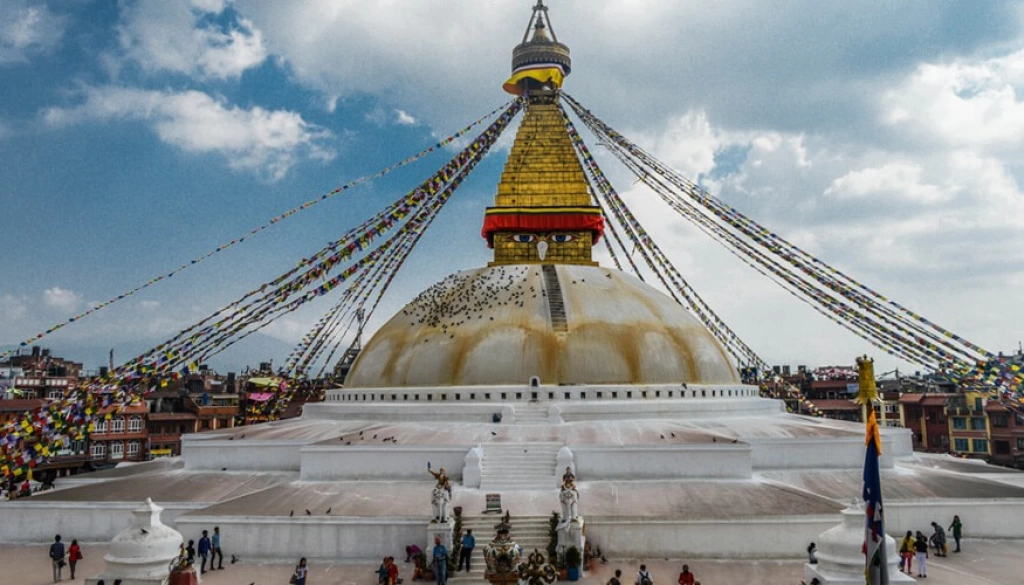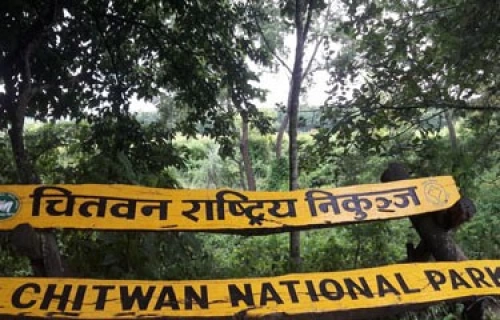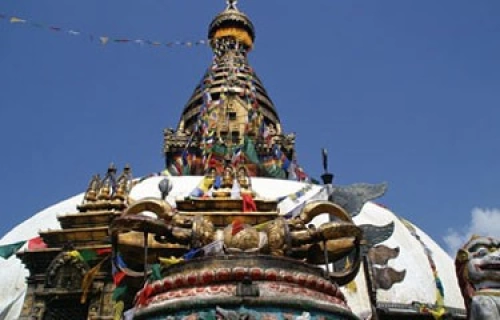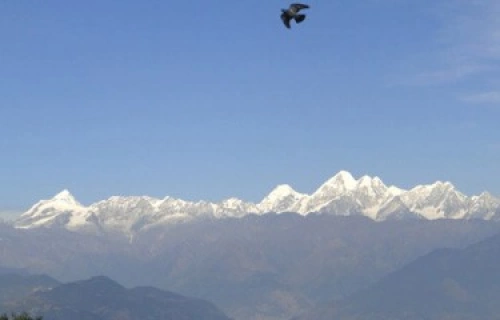About Golden Triangular Tour
Nepal has more than mountains !! Our 8 Days Golden Triangular Tour is a great way to explore some of the other beauties of Nepal, such as its culture, history and wildlife. We also recommend it for those with extra days at the beginning or end of their time in Nepal. This 8-day tour starts with a tour of the UNESCO World Heritage sites of Kathmandu, Patan and Bhaktapur. Next we drive to the national park in Chitwan. Even if you’re not lucky enough to spot a rhino or tiger, there’s plenty of other wildlife to keep you entertained! The tour then takes in the lake city of Pokhara where you can go paragliding, rafting, or kick back and sip a cocktail on the lakeside, the choice is yours.
Kathmandu is not only the capital and economic hub of Nepal; it is a city with a rich history that goes back around 2000 years and is well interwoven and inseperable from mythology and legend. Stroll in the throbbing streets of Kathmandu , a city where modern and ancient exist simultaneously !! Admire marvelous ancient architecture!
The well preserved ancient royal palaces in Kathmandu, Patan and Bhaktapur date back to the 12th century. These are remnants of the three distinct kingdoms which once ruled the valley. Until now, these ‘darbars’ function as temples; and each one is home to a Living Goddess, or Kumari. Religion is an important part of the culture and lifestyle of the Nepalese.
Pashupatinath is the most sacred Hindu shrine in Nepal and one of the 275 Holy Abodes of Shiva on the continent. It is believed to date back to 400 A.D. It is the preferred site of cremation for Hindus, as it is situated along the banks of the Bagmati River; ashes swept into this river eventually reach the Holy Ganges. A yearly festival called Maha Shivaratri brings over 700,000 devotees to Pashupati.
Boudhanath is one of the largest Buddhist stupas in the world as well as one of the holiest centers of Tibetan Buddhism outside of Tibet. Thousands of Tibetan refugees have found refuge around this stupa since the Chinese invasion. Shops and gullies around the stupa have a distinctly Tibetan style. The stupa is rich with Buddhist symbolism.
Swayambhunath is a prime example of the beauty of coexistence and fusion of relition. Both Buddhists and Hindus pay homage there. Climb 365 steps to reach the 5th century Swayambhunath for a birds-eye view of the city. It is also called the Monkey Temple and you will understand why when you pay your visit
Chitwan National Park is a wildlife conservatory and one of the world heritage sites of Nepal.The sub-tropical jungles of southern central Nepal are a sanctuary for the one horn rhinoceros, tigers and wild elephants as well as many other wild animals and birds. Some of the delightful ways of enjoying the wildlife are canoe rides down the river and elephant or jeep safari into the jungle.
Chitwan is also home to the Tharu ethnic group who were likely the earliest inhabitants of the area. Tharu culture is unique and fascinating. Their spiritual beliefs are strongly linked with nature, not surprising as they have lived harmoniously with nature for centuries. A cultural program is likely to include Tharu stick-dancing and the peacock dance.
Pokhara is a tranquil city of incredible natural beauty. Pokhara is the starting and ending point for most treks in the Annapurna Region. Tourist hotels and shops are clustered near the peaceful Fewa Lake, which has a small island in the middle, just big enough for the Barahi Temple. The island is reached by row-boat, as is the World Peace Pagoda which is perched on a hill on the south shore of the lake.
It is possible to get some wonderful views of the Annapurna range right from Pokhara. Directly north, towering over Pokhara is the Machhapuchhre, 6993m, or Fishtail flanked by three eight-thousand mountains Dhaulagiri 8167m, Manaslu 8163m and Annapurna 8091m. For an even better view, we will drive to Sarangkot on a nearby hilltop to watch the sun rise on the mountains.
A tributary of the Seti River narrows into a deep canyon and even goes underground as it passes through Pokhara. At one point called Davis Falls the water gushes down, and then disappears underground. Nearby Gupteswor Cave is a dedicated as a Hindu temple on the first level, and the second, lower level goes down to where the river runs. When the river level is high during the monsoon, the cave is closed. Private Tours are avialble to start instantly. Group departs when we have minimum 1 participant for any Tours.



